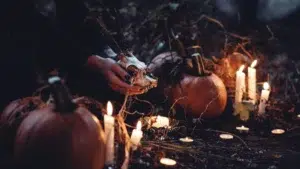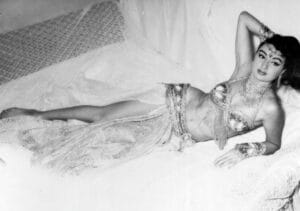
7th International Flamenco Festival City of Jaén 2025: TRAN TRAN launches footwear that transforms your dancing experience
Tran Tran at the Jaén Flamenco Festival: tradition, innovation, and lots of artistry Have you ever felt that pain
Dance has played an essential role in cinema since its beginnings.
Beyond being a mere form of entertainment, these artistic expressions have profoundly influenced film narrative, character development and visual aesthetics.
Over the decades, dance in film has evolved, reflecting social, cultural and technological changes.
Silent films, which dominated the industry from the late 19th century until the late 1920s, used dance as a form of visual communication. Actors such as Charlie Chaplin incorporated elements of dance into their movements, creating comedy and emotion without the need for words..
Dance numbers in silent films were often elaborate and meticulously choreographed to capture the audience’s attention and tell stories through movement.

With the advent of talkies, musicals became a dominant genre. Films such as “42nd Street” (1933), “Top Hat” (1935) and “The Wizard of Oz” featured dance numbers that fused the talents of dancers and choreographers with the magic of film.
Fred Astaire and Ginger Rogers, one of the most iconic dance couples of this era, epitomized elegance and grace. These films not only showcased technical skills, but also used dance and music to develop plots and relationships between characters.
As a result we have unforgettable musicals, movies, plays… that have become timeless classics in our popular culture.

During the 1950s and 1960s, dance showed that it could be a vital and organic component of cinematic storytelling, not just an additional element, with productions such as “Singing in the Rain” (1952) and “West Side Story” (1961).
Gene Kelly, known for his innovation and energy, transformed cinematic dance into a dynamic art form in which his choreography combined technique, expression and narrative.
“West Side Story” is a prime example of how dance can be a powerful tool for telling complex stories and addressing social issues, such as gang rivalry and forbidden love.

The 1970s brought with it a diversification in the way dance was represented in film.
Films such as “Saturday Night Fever” (1977) reflected disco culture and urban life, showing how dancing could be a form of escape and self-expression.
In the 1980s and 1990s, the popularity of music videos and the influence of MTV brought dancing to a new level of visibility, inspiring films such as “Flashdance” (1983) and “Dirty Dancing” (1987).

En el siglo XXI, el cine ha continuado explorando y expandiendo los límites del baile. Películas como “Step Up” (2006) y “La La Land” (2016) han demostrado que la danza sigue siendo relevante.
Technology and visual effects have enabled the creation of dance scenes that would have been impossible in previous decades, while globalization has introduced a greater diversity of dance styles into mainstream cinema.
In short, the seventh art will continue to evolve relentlessly at the pace set by social and cultural changes, reflecting concerns, trends, innovations… And it will always resort to dance, either as a protagonist or enhancing emotions, making us dream and giving us many other unforgettable moments.

Tran Tran at the Jaén Flamenco Festival: tradition, innovation, and lots of artistry Have you ever felt that pain

Always attracted by the Celtic culture and with Galician roots that bring us closer to this holiday, we have

Today the legendary Dalilah would be 88 years old, it is the perfect day to remember her. A Madrilenian elected in 1959 the best dancer in Cairo no less and whose life deserves to be told on the big screen.

The TRAN TRAN logo includes two elements that have not been chosen at random, on the contrary, they have

Have you ever wondered why Book Day is celebrated on April 23? This date was chosen because it coincides

If you are interested in flamenco dance, we have three months full of interesting events before the summer. We